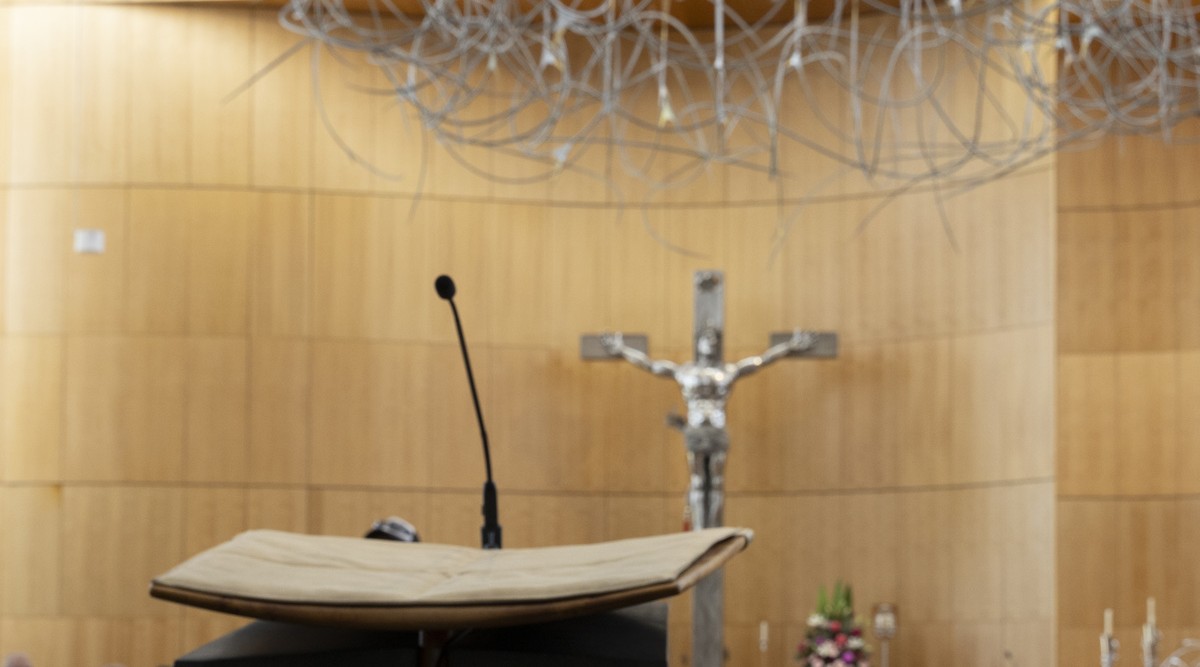Sign, Symbol and Sacrament
National Liturgical Council

There is more to this than meets the eye. Signs, symbols and sacraments all point to something else.
SIGNS are the simplest. They point to a single thing. At a street corner, the red octagonal sign means only one thing: stop! It does not stop the car, but it gives the driver that clear message. Logos are signs that identify an organisation or activity.
A SYMBOL is a kind of sign but is more complex. They are multivalent, sometimes ambiguous and more difficult to read. They work by association. A material object takes on new layers of meaning. A hat might become a symbol of our grandpa and all he means for us. The red rose is a traditional symbol of love. A particular bloom may be just the same as the bucketful at the florist, but once it is selected and presented to the beloved, it becomes something special – it symbolises a relationship of tenderness and respect. It can even foster and deepen a couple’s love.
Water is a strong symbol. It might evoke our experiences by rivers and streams, at springs, rock pools and waterfalls, or on the beach by the ocean. Water speaks of the grandeur of creation and the joy of recreation. Water brings life and makes things grow. Water washes, cleans and makes things new. But then we remember torrential rain, flooding and cyclone and we may be terrified. Water means drowning and becomes a symbol of death and destruction. Water is simultaneously both life and death. We look at water but see a whole lot more.
A SACRAMENT is a kind of symbol but takes us into another dimension, the spiritual. The sacraments open up our relationships with God in Jesus Christ. Yes, we use concrete things such as water and oil, bread and wine, words and gestures, but now they operate in the realm of faith and offer us that relationship with God that we call grace. The Church makes the sacramental signs, and through them God grants us grace -- we encounter the actions of Christ and we are transformed.
The symbols retain their rich tapestry of meaning, but as a sacrament there is more. Plunged into the water of baptism, we die with Christ and rise with him to new life. Anointed with oil, we are strengthened and raised up by the healing touch of Christ. In the Eucharist, we are fed and nourished by the blessed Sacrament of bread and wine in which Christ gives us his very self. Because the sacraments put us in touch with God, they are effective signs, that is, they actually do what they say they do.
These sacramental signs are made in the context of liturgy. The sacramental ritual or rite enables the gathered Church to participate together in what God is doing for us. The rite is an ecclesial action of the Body of Christ. Because of the holy things they signify, it is important that the signs be made clearly and strongly. So we ask not just do the sacraments effect what they signify, but also do they signify what they effect! Sacraments work by signifying and they will be more fruitful in people’s lives if they are engaging and powerful signs. The signs lead us to the great mystery of Christ’s saving work.
That is why the liturgy encourages to give careful attention to the sacramental sign: offering people communion from bread that looks like real food, bread that can be broken up and shared; providing, in accordance with the Lord’s command, not only communion in the form of bread but also from the cup; using a significant body of water for baptism so that our encounter with the sign will speak to us of washing away sin and being reborn as children of God.
We may think of a sacrament as a window. As we look through a window to the view, so we look through the sacramental sign to recognise the work of Christ in our lives and to enter the mystery of a life of grace. If a window is smeared and dirty, it distracts from the view. If we do not make our sacramental signs well, it is harder to enter into the mystery they contain. In any case, we need to learn how to see, to discern and understand what God is doing for us in the actions of the Church.
The interplay of the Church’s sacramental system flows from the basic theological reality of the incarnation. God comes to save us by taking up human existence, in our human world, approaching us in a way we can deal with.
This existential engagement happens — in continuity with and consistent with the method of incarnation — in a sacramental way. The liturgy is done with things that are the exact opposite of spiritual abstractions: bread, wine, oil, water, fragrances, fire, ashes, rock, fabrics, colours, body, words, sounds, silences, gestures, space, movement, action, order, time, light. The whole of creation is a manifestation of the love of God, and from when that same love was manifested in its fullness in the cross of Jesus, all of creation was drawn toward it. It is the whole of creation that is assumed in order to be placed at the service of encounter with the Word: incarnate, crucified, dead, risen, ascended to the Father. Pope Francis, Desiderio desideravi (2022), 42.
